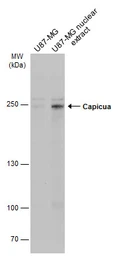Capicua antibody
Cat. No. GTX129513
Cat. No. GTX129513
-
HostRabbit
-
ClonalityPolyclonal
-
IsotypeIgG
-
ApplicationsWB
-
ReactivityHuman

